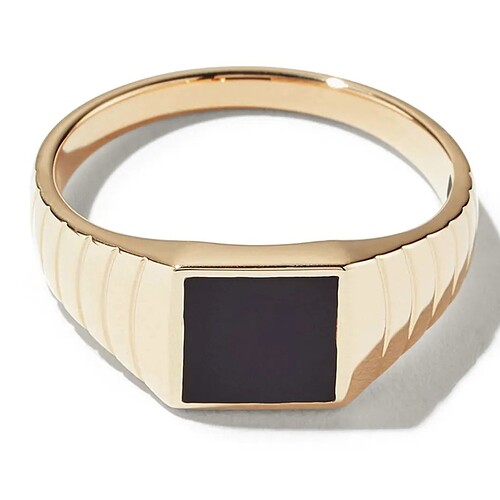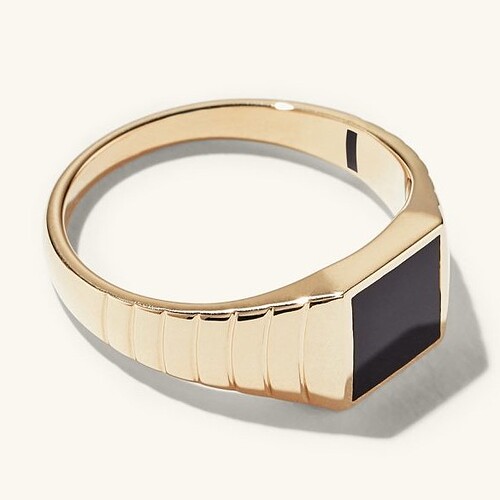Hello everybody,
I’ll start off by saying that I don’t make jewelry myself, but I was hoping some of you could share some of your expertise with me.
I’m looking to have a custom ring made, and I’m still trying to get an idea of what I want, but I don’t quite have the information I’d like to begin, which is why I’m posting this.
Basically, I’m looking to have a bezel set ring made (it will be cast) with a square cabochon stone. It will be a masculine ring, so it will be rather large, of course, but I also don’t want it to be huge. I’m going to have the cabochon cut from a slice of agate at a local lapidary, and I was just wondering if anybody could help me decide how big I should have them make it. Looking at rings I already have, I’d prefer for the stone to be 8-9mm (visibly). I have larger ones as well, but I don’t like rings that are too big. My main question for this part is how big should the cabochon actually be? I was thinking about having 1.25-1.5mm of metal covering it on the sides, but I’m not sure if that’s too much or too little. One of the rings I already have with a 10mm stone has 1.75mm of metal covering it on all sides, which I think looks too thick. I’d mainly like to know how thick the bezel should be to be sturdy and secure, but also not super huge, like a large frame. In addition to this, I’m not sure how thick to have them make the cabochon. What would be a good thickness for a cab to be resilient but also not so thick that it rests 6mm or more off of the finger? Is 3mm a good thickness, or is that too thick? Maybe 4mm would work better; I really don’t know.
Preferably, I’d like the maximum thickness of the ring to be 10mm wide with an 8mm (visible) gem. I say visible because I know some of it will have to be covered by the bezel. I’m willing to go up to 11mm as well, but that’s about the limit for me, so I’d like to know how big the cabochon needs to be in order to fit into such a setting. I’m also fine with making the cabochon smaller if that’s what needs to happen. So long as the stone is secure, and the bezel isn’t too thick, I’m fine with it, so any help would be greatly appreciated.
Thank you!

